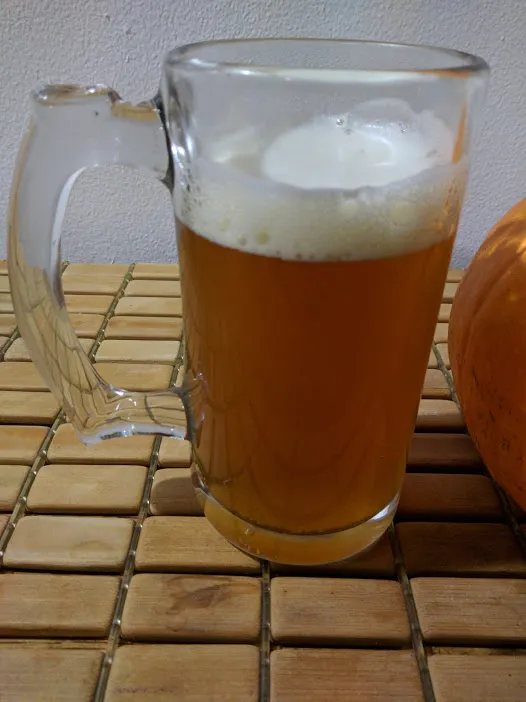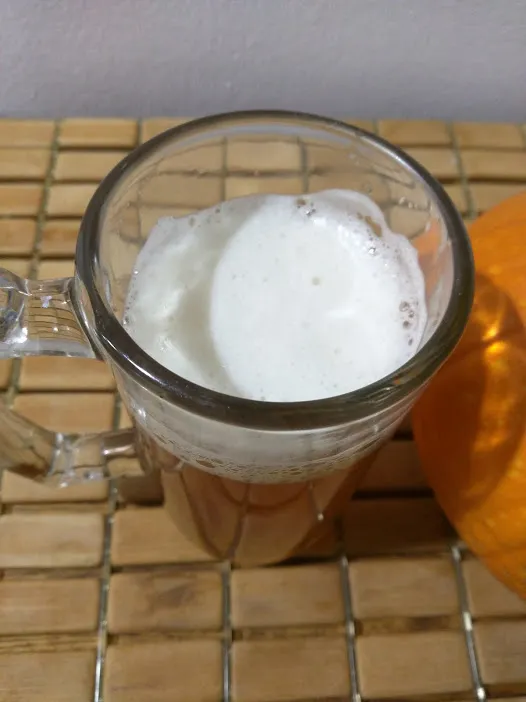Belgian beers are complex and widely varied in flavor. Commercially available varieties include the well known trapist ale Chimay and the esoteric and unpredictable farmhouse ale Phantome. Some closely guarded and secret Belgian monasteries will not sell their beers to tourists, let alone distribute them across the world. Needless to say, the world of Belgian beers is highly varied and often hard to come by.
This beer, much like my last beer, is in the realm of freestyle. It is a farmhouse ale, a style that allows for open fermenting in barns, spontaneous fermentation, mixed culture fermentation, and an endless array of adjuncts and aging methods.
This beer is the first of three I made from a split batch of farmhouse wort (5 gallons/1 keg/50 beers each batch). The grain bill is more complex than the last: 18 lbs of Belgian Pilsen, 2 lbs victory malt (it adds complex sugars that ordinary yeasts cannot convert to alcohol so are experienced as sweetness instead), 2 lbs biscuit, 2 lbs malted rye, 2 lbs unmalted wheat (adds a more nutty flavor than malted wheat).

For the hops, I eyeball a small handful of CTZ at the beginning of a 1 hours boil because farmhouse ales don't require much bitterness. I added two heaping handfuls of nugget hops at the end of the boil. Why not just dry hop the nugget to leave it uncooked? Nugget has a very distinctive herbal flavor when uncooked. It is good but not great. Cooking it for a very short time changes that into a more delicate and desirable flavor, often described as mango-ish when smelled in the boil but that doesn't tend to carry through to the beer without the use of a hopback to avoid the loss of essential oils: 
For the water, I used 75% reverse osmosis (RO) and 25% Los Angeles tap water, filtered through a carbon block to remove chlorine. I prefer to use RO water to avoid the flouride our government puts in our water. Normally, the LA water profile is great for malty, dark beers despite the poison added to it. Cutting it with all that RO water gives the finished beer a much softer appeal.

At only 4% this is sometimes called a "Belgian table beer". The wheat gives some solid head, but not as much as you might expect due to the massive addition of hops (and therefore oils which break head retention).
Many professional beer tasters talk about "hop forward beers" (often IPA's) and "malt forward beers". This is what I call a "yeast forward beer" despite all those hops because for a Belgian beer the yeast is where all the action is. I used the famous yeast isolated from Saison DuPont. When managed correctly, you pitch the yeast at the low range of fermentation (65F) and ramp it up to as high as 84F at the end of fermentation to gain a balance of black pepper, biscuit, and fruity esters. Heating it up at the end dries out the beer well and gives just a hint of funk.

I will often finish a beer like this on a brettomyeces to add complexity. Not this time. This beer is so small (low alcohol) and fresh (lots of fresh hops) that we are calling it done as soon as possible.
The front of the beer is slightly sweet with high notes of the hops, almost fruity but more herbal. The entirety of that front is balanced with an extremely desireable middle, which I wish would linger longer. It is complex and exciting and I wish I could share it with the world. The end is light and delicate. It leaves me yearning for more. I'm loving the nuance.
The verdict? This is my favorite, the best beer out of the 6 batches I did a few weeks ago. You can drink glass after glass, but I force myself to alternate a different beer in between glasses so that I can taste it like it is new. The keg is almost done already and I had to review it before I tap it this weekend.
If you like this post, please consider upvoting my comment on the #beersaturday post: https://steemit.com/beersaturday/@detlev/whoot-31-weeks-of-steemit-beersaturday-challenge-join-and-win-from-15-sbd-in-prizes